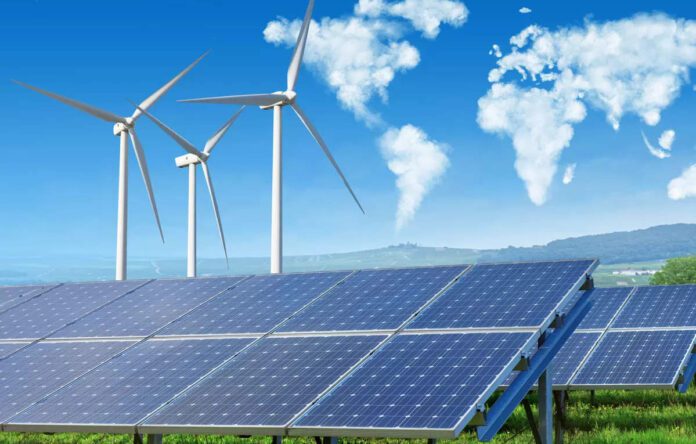I. Introduction
The government plays a pivotal role in shaping economic sectors, influencing investment opportunities, fostering innovation, and promoting sustainability. This article delves into the significant impact of government policies on two burgeoning sectors in India: energy and transportation.
A. Boosting Renewable Energy
In the energy sector, there is a notable focus on transitioning from fossil fuel-based power to renewable energy sources. The government’s initiatives include subsidies to enhance affordability, stimulate technological innovation, and attract investors. The renewables subsidies doubled from FY 2021 to FY 2022, amounting to Rs. 11,529 crores. These subsidies aim to increase installed and production capacity across renewables.
B. Advancements in Solar, Green, and Wind Energy
The government’s schemes, such as the Production Linked Incentive (PLI) for Solar, coupled with imposing Basic Customs Duty (BCD) on solar cell and module imports, aim to strengthen domestic manufacturing. Wind energy projects are also gaining traction, with plans to invite bids for 50GW annual capacity, including significant allocations for wind energy. India’s first offshore wind tender is on the horizon, tapping into the offshore wind potential of Tamil Nadu and Gujarat’s coasts.
C. Tripling Non-Fossil Capacity
With a bold vision, the government aims to establish 500 GW of non-fossil capacity by 2030. This ambitious target opens up significant investment opportunities, especially in developing, stabilizing, and commercializing newer technologies like battery storage systems and green hydrogen. The transition to cleaner energy also presents opportunities in setting up transmission lines, smart grids, and public transportation networks.
II. Cleaner Transportation
In the transportation sector, the focus is on improving overall infrastructure efficiency, reducing vehicular emissions, and developing a low-carbon transportation system. Policies like the Faster Adoption and Manufacturing of Electric Vehicles (FAME) aim to increase the usage of electric vehicles (EVs) with a target of converting 30% of total transportation into EVs by 2030. Budgetary support of Rs. 10,000 crores is allocated for subsidies and establishing around 2700 EV charging stations.
A. National Policy on Biofuels
The National Policy on Biofuels emphasizes increasing biofuel usage in the energy and transportation sectors. Initiatives like Ethanol Blended Petrol (EBP) have seen success, with India achieving its 10% blended target and now aiming for 20% blended by 2025. This provides investment opportunities in companies providing ethanol to oil marketing companies (OMCs), reducing dependence on crude and LNG imports.
B. Navigating Government Policies
While government policies can provide a significant push for industries, continuous monitoring is essential to mitigate potential drawbacks. It’s crucial to consider the impact when policies are discontinued or redirected towards alternative sources. Tools like Tickertape can aid in screening stocks or mutual funds that align with emerging trends, ensuring sustained and informed investments.
III. Bidding for Renewable Energy
A. Insights into Government Plans
The government’s initiative to invite bids for 50GW annual capacity, with a substantial portion allocated to wind energy, provides insights into the evolving landscape of renewable energy in India.
IV. Offshore Wind Potential
A. Untapped Potential in Tamil Nadu and Gujarat
Exploring the untapped potential of offshore wind projects and the identification of Tamil Nadu and Gujarat’s coasts for significant capacity contribute to the discussion on India’s renewable energy future.
V. Tripling Non-Fossil Capacity
A. Ambitious Target of 500 GW by 2030
The Indian government has set forth an ambitious and transformative target of achieving 500 gigawatts (GW) of non-fossil fuel-based power generation capacity by the year 2030. This monumental goal marks a paradigm shift in India’s energy landscape, emphasizing a substantial move away from traditional fossil fuels toward cleaner and sustainable sources of power.
1. Rationale Behind the Ambitious Goal
The decision to set such an ambitious target stems from a combination of environmental, economic, and strategic considerations. India, like many other nations, recognizes the urgent need to address climate change and reduce greenhouse gas emissions. By pivoting toward non-fossil fuel energy sources, the country aims to contribute significantly to global efforts in mitigating climate change and achieving a more sustainable future.
Economically, investing in renewable energy aligns with the goal of reducing dependency on imported fossil fuels, ensuring energy security, and fostering a self-sufficient and resilient energy infrastructure. The transition to cleaner energy sources also presents economic opportunities, from job creation to the growth of a robust renewable energy industry.
2. Diversification of Energy Sources
To achieve the 500 GW target, there is a strategic focus on diversifying the energy mix. This includes scaling up the capacity of existing renewable sources like solar and wind, exploring newer technologies, and investing in emerging areas such as battery storage systems and green hydrogen production. The emphasis is not only on increasing capacity but also on incorporating cutting-edge technologies to enhance efficiency and reliability.
3. Investment Opportunities
The ambitious target opens up a plethora of investment opportunities across the entire spectrum of the energy sector. Investors, both domestic and international, have a chance to participate in the growth of renewable energy projects, manufacturing of related technologies, and the development of critical infrastructure. The government’s commitment to providing a conducive environment for investors, coupled with various incentives and subsidies, further enhances the attractiveness of these opportunities.
4. Impact on Sustainable Development
Beyond economic considerations, the 500 GW target aligns with India’s broader sustainable development goals. Increased reliance on non-fossil fuel-based energy contributes to cleaner air, improved public health, and the overall well-being of the population. Additionally, it positions India as a global leader in sustainable practices and renewable energy adoption.
5. Challenges and Mitigation Strategies
While the goal is ambitious and laudable, it comes with its set of challenges. These may include technological hurdles, funding requirements, and the need for robust policy frameworks. Continuous monitoring, adaptation of policies, and international collaborations are crucial in overcoming these challenges and ensuring the successful realization of the 500 GW target.
VI. Navigating Government Policies
A. Continuous Monitoring for Sustainable Investments
Emphasizing the necessity of continuous monitoring of government policies to mitigate potential drawbacks and ensure sustained investments. Recommending platforms like Tickertape for effective stock and mutual fund screening based on emerging trends and sector-specific analysis.
VII. Conclusion
In conclusion, the dynamic landscape of government policies in India’s energy and transportation sectors presents both challenges and opportunities for investors. Navigating these policies requires vigilance, adaptability, and leveraging financial tools to make informed investment decisions aligned with the country’s sustainable development goals.










